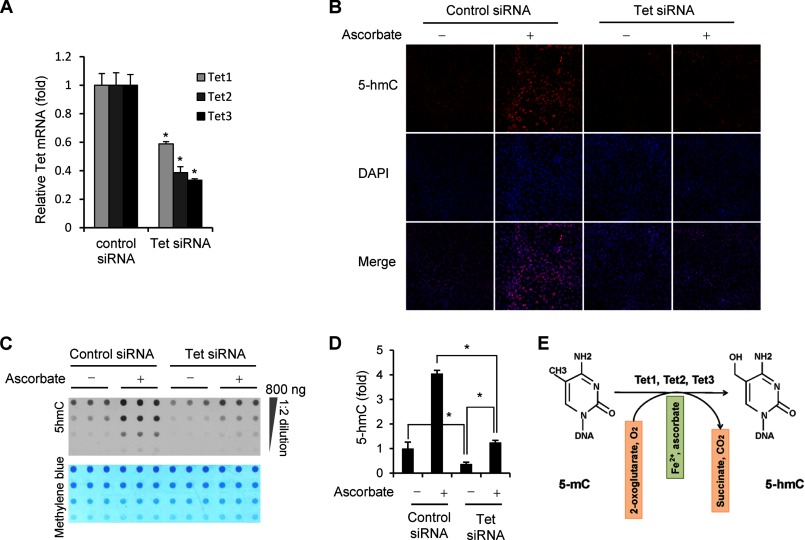FIGURE 4.
The effect of ascorbate on 5-hmC generation is mediated by Tet methylcytosine dioxygenase. A, siRNAs targeting Tet (Tet1, Tet2, and Tet3) decrease the level of Tet mRNAs to, ∼60% for Tet1, ∼40% for Tet2, and ∼35% for Tet3 as compared with control siRNA shown by quantitative RT-PCR. (*, p < 0.05 assessed by Student's t test; data are represented as mean ± S.E.) B, immunostaining shows that knocking down the expression of Tet genes decreases the basal level of 5-hmC signal and attenuates the induction of 5-hmC by ascorbate (10 μm) treatment for 24 h. C, a representative dot-blot shows that cells with less Tet1–3 reduce the generation of 5-hmC by ascorbate (10 μm) treatment. D, semiquantitative analysis of the dot-blot indicates that Tet1–3 partially depleted cells exhibit a decrease in the basal level of 5-hmC (∼40% as compared with the controls). Ascorbate still induces an increase (∼3-fold) of 5-hmC content in Tet1–3 partially depleted cells, but this effect is much smaller as compared with its effect in control cells (*, p < 0.05 assessed by Student's t test; data are represented as mean ± S.E.). E, in addition to Fe2+ as a co-factor and 2-oxoglutarate as co-substrate, ascorbate is suggested as an additional co-factor for Tet to hydroxylate 5-mC to 5-hmC.

